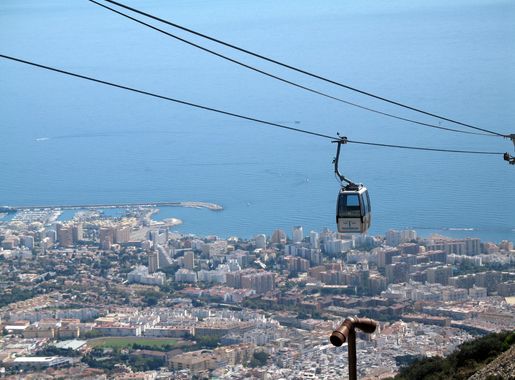
The Sun-Kissed Shores of Costa del Sol
Discover Costa del Sol: Spain's Sunny Paradise with Golden Beaches, Rich Culture, and Vibrant Nightlife
Costa del Sol, located in the southern region of Spain, is a paradise for sun-seekers and beach lovers. Stretching along the Mediterranean coast, this area is renowned for its golden sandy beaches, vibrant nightlife, and charming white-washed villages. The name 'Costa del Sol' translates to 'Coast of the Sun,' a fitting title as the region enjoys over 300 days of sunshine each year. The bustling city of Málaga serves as the gateway to Costa del Sol, offering a rich blend of history, culture, and modern amenities. Here, you can explore the impressive Alcazaba fortress, visit the birthplace of Pablo Picasso, and stroll through the lively port area. Just a short drive away, you'll find the glamorous town of Marbella, known for its upscale resorts, chic boutiques, and the famous Puerto Banús marina. For those seeking a more tranquil experience, the picturesque villages of Mijas and Nerja provide a glimpse into traditional Andalusian life. Mijas, perched on a hillside, offers stunning views of the coast and charming narrow streets lined with flower-filled balconies. Nerja boasts the spectacular Caves of Nerja, a series of ancient caverns with impressive stalactites and stalagmites. Along the coast, the Balcón de Europa offers breathtaking panoramic views of the Mediterranean Sea. Costa del Sol is also a haven for outdoor enthusiasts, with numerous golf courses, hiking trails, and water sports activities available. Whether you want to relax on the beach, explore cultural landmarks, or indulge in local cuisine, Costa del Sol has something for everyone.
Local tips in Costa del Sol
- Visit in the shoulder seasons (spring and autumn) to avoid the peak tourist crowds and enjoy milder weather.
- Rent a car to explore the various towns and villages along the coast for a more flexible and enriching experience.
- Try the local cuisine, especially fresh seafood and traditional Andalusian dishes like gazpacho and paella.
- Book tickets in advance for popular attractions like the Caves of Nerja to avoid long waits.
- Bring sun protection, including hats, sunglasses, and high-SPF sunscreen, as the sun can be intense even in the cooler months.
The Sun-Kissed Shores of Costa del Sol
Costa del Sol, located in the southern region of Spain, is a paradise for sun-seekers and beach lovers. Stretching along the Mediterranean coast, this area is renowned for its golden sandy beaches, vibrant nightlife, and charming white-washed villages. The name 'Costa del Sol' translates to 'Coast of the Sun,' a fitting title as the region enjoys over 300 days of sunshine each year. The bustling city of Málaga serves as the gateway to Costa del Sol, offering a rich blend of history, culture, and modern amenities. Here, you can explore the impressive Alcazaba fortress, visit the birthplace of Pablo Picasso, and stroll through the lively port area. Just a short drive away, you'll find the glamorous town of Marbella, known for its upscale resorts, chic boutiques, and the famous Puerto Banús marina. For those seeking a more tranquil experience, the picturesque villages of Mijas and Nerja provide a glimpse into traditional Andalusian life. Mijas, perched on a hillside, offers stunning views of the coast and charming narrow streets lined with flower-filled balconies. Nerja boasts the spectacular Caves of Nerja, a series of ancient caverns with impressive stalactites and stalagmites. Along the coast, the Balcón de Europa offers breathtaking panoramic views of the Mediterranean Sea. Costa del Sol is also a haven for outdoor enthusiasts, with numerous golf courses, hiking trails, and water sports activities available. Whether you want to relax on the beach, explore cultural landmarks, or indulge in local cuisine, Costa del Sol has something for everyone.
When is the best time to go to Costa del Sol?
Iconic landmarks you can’t miss
Plaza de España
Discover the grandeur of Plaza de España, a historical and cultural gem in the heart of Madrid, perfect for sightseeing and relaxation.
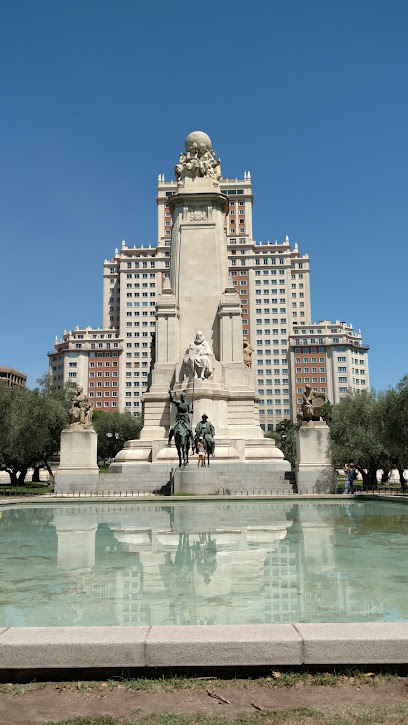
Alcazaba
Discover the breathtaking Alcazaba of Málaga, a stunning Moorish fortress rich in history and stunning views, perfect for every tourist's itinerary.

Fundación Cueva de Nerja
Discover the breathtaking Cueva de Nerja, a natural wonder filled with ancient caverns and rich history, perfect for an unforgettable Costa del Sol adventure.
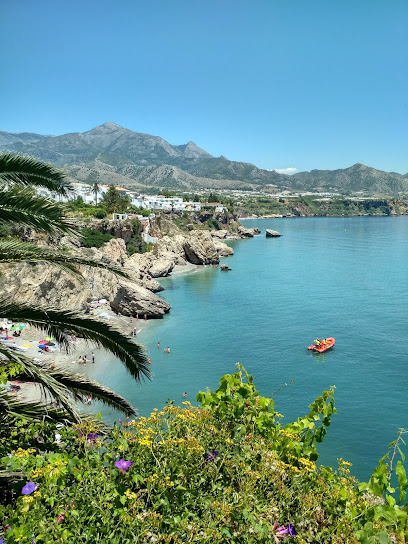
Caminito del Rey . North Access
Discover the breathtaking Caminito del Rey, a stunning hiking area in Málaga, Spain, offering exhilarating views and unforgettable nature experiences.

Santa Iglesia Catedral Basílica de la Encarnación
Explore the majestic Santa Iglesia Catedral Basílica de la Encarnación, a stunning blend of history and architecture in the heart of Málaga, Spain.
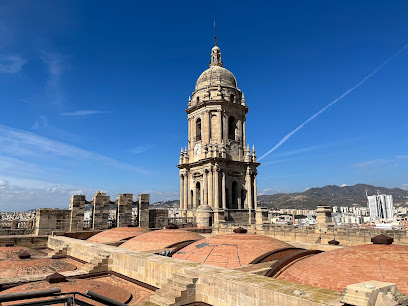
Bioparc Fuengirola
Experience the beauty of wildlife conservation at Bioparc Fuengirola, a unique animal park that captivates visitors with its immersive habitats and diverse species.

Castillo de Gibralfaro
Explore the historic Castillo de Gibralfaro in Málaga, offering breathtaking views, rich history, and a glimpse into Spain's cultural heritage.
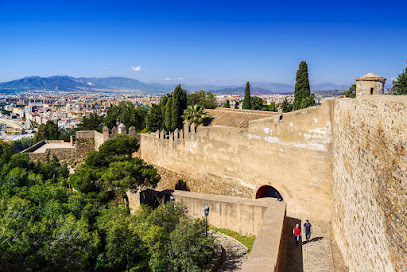
Colomares Castle
Explore the stunning Colomares Castle, a tribute to Christopher Columbus, with its unique architecture and breathtaking views in Benalmádena, Costa del Sol.
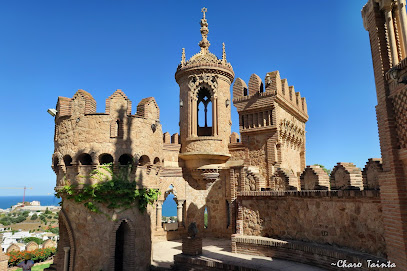
Málaga Park
Discover the serene beauty of Málaga Park, a lush green oasis in the city center, perfect for relaxation, art appreciation, and leisurely strolls.
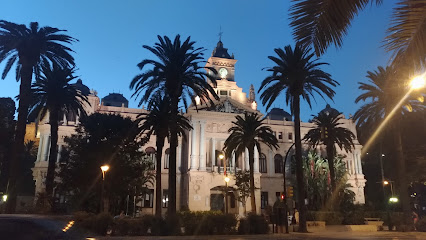
Parque del Oeste
Discover tranquility at Parque del Oeste, Málaga's lush park filled with vibrant gardens and stunning views, perfect for picnics and leisurely strolls.
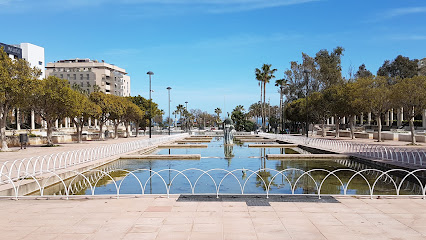
Selwo Aventura
Discover the adventure of wildlife at Selwo Aventura in Estepona, Málaga, where nature and excitement come together for an unforgettable family experience.
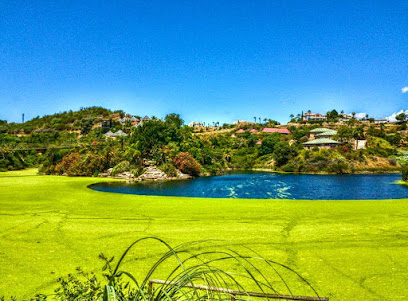
Teatro Romano de Málaga
Experience the grandeur of the ancient world at Teatro Romano de Málaga, a stunning historical landmark in the heart of Andalusia.

CAC Málaga
Discover the dynamic world of contemporary art at CAC Málaga, featuring innovative exhibitions and a vibrant atmosphere in the heart of the city.
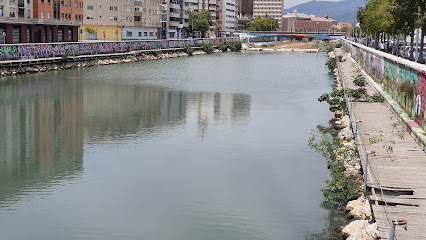
Mirador de Gibralfaro
Discover breathtaking views and rich history at Mirador de Gibralfaro, a scenic spot in Málaga that captures the essence of Andalusia.
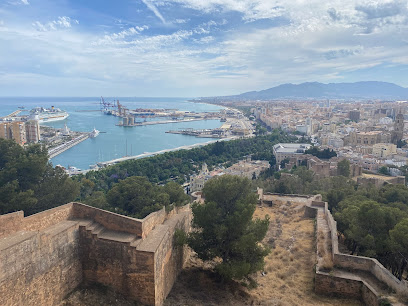
Centro Histórico de Estepona
Explore Estepona's Historic Center, a vibrant area brimming with traditional Andalusian architecture, charming plazas, and delightful local cuisine.
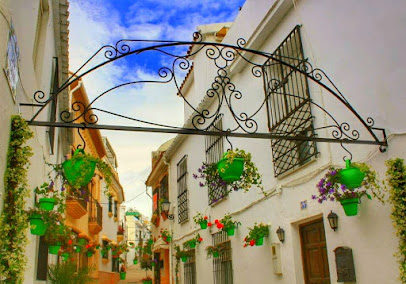
Unmissable attractions to see
Alcazaba
Discover the historic Alcazaba of Málaga, a stunning fortress offering breathtaking views and rich cultural heritage in the heart of the city.
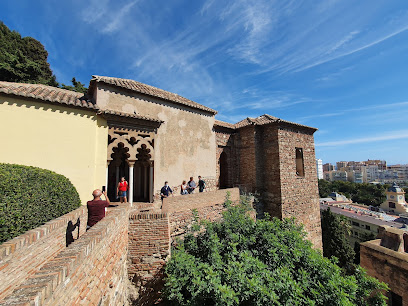
Fundación Cueva de Nerja
Experience the stunning Fundación Cueva de Nerja, a natural wonder of stalactites and stalagmites, rich in history and breathtaking beauty.
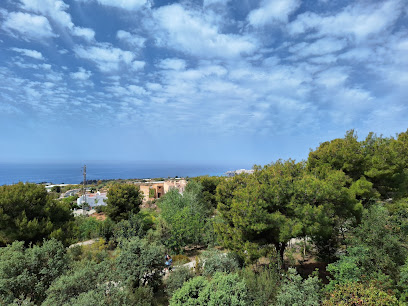
Bioparc Fuengirola
Immerse yourself in the natural beauty and wildlife wonders at Bioparc Fuengirola, a top-tier animal park in the heart of Costa del Sol.
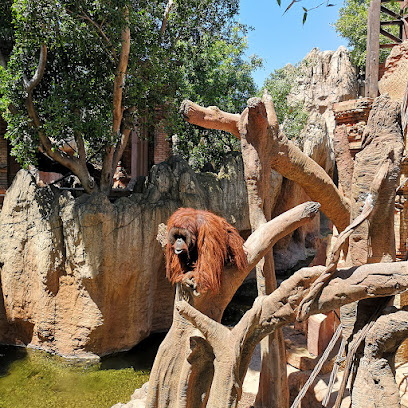
Mariposario de Benalmádena-Butterfly Park
Explore the Mariposario de Benalmádena, a butterfly park filled with thousands of butterflies and exotic plants, perfect for nature lovers and families.
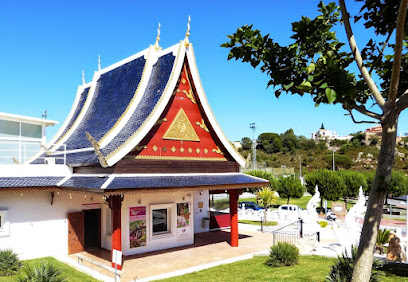
Selwo Aventura
Experience the thrill of wildlife at Selwo Aventura, a premier animal park in Estepona, where conservation meets adventure amidst nature's splendor.
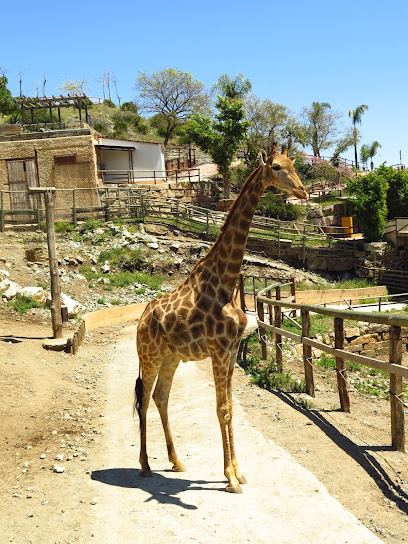
Castillo Sohail
Explore Castillo Sohail, a historical castle in Fuengirola offering stunning views of the Mediterranean and a glimpse into Spain's rich past.
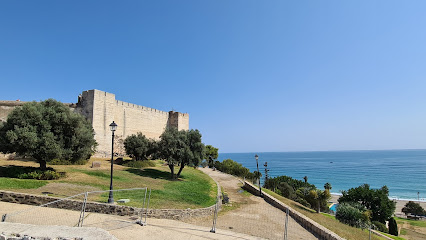
Aquamijas
Experience fun and adventure at Aquamijas, the ultimate water park in Málaga offering thrilling slides and family-friendly attractions.
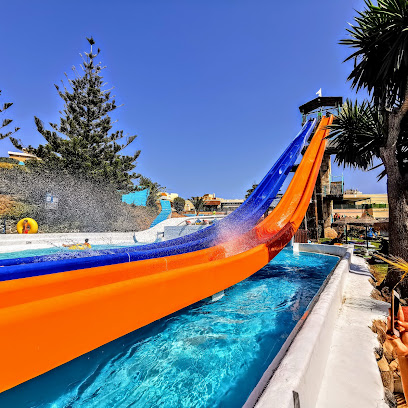
Sould Park Fuengirola - Parque infantil y Atracciones
Experience the magic of family fun at Sould Park Fuengirola, where thrilling rides and playful attractions await children of all ages.
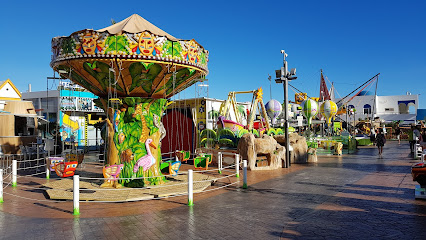
Molino de Inca Botanical Garden
Explore the lush beauty of Molino de Inca Botanical Garden, a serene escape filled with exotic plants and tranquil water features in Torremolinos.

Dunas de Artola o Cabopino
Explore Dunas de Artola o Cabopino, a stunning ecological park in Marbella, where breathtaking dunes meet the azure Mediterranean Sea.

Mirador de Ronda
Experience the stunning vistas of Ronda at the Mirador de Ronda, a must-visit scenic spot showcasing incredible views of the iconic Puente Nuevo and breathtaking landscapes.
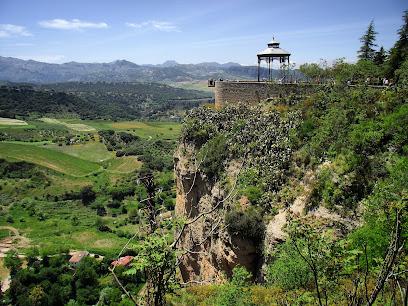
PEÑÓN DEL CURA
Explore the breathtaking Peñón del Cura, a stunning coastal rock formation in Las Lagunas de Mijas, perfect for outdoor adventures and serene escapes.
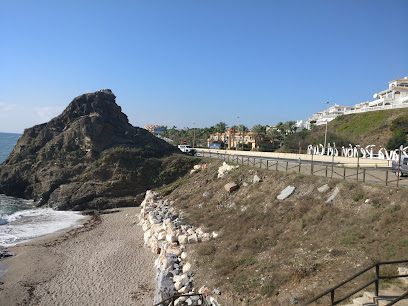
Mercado Municipal de Marbella
Experience the essence of traditional Spanish life at the bustling Mercado Municipal de Marbella, where local flavors and culture come alive.
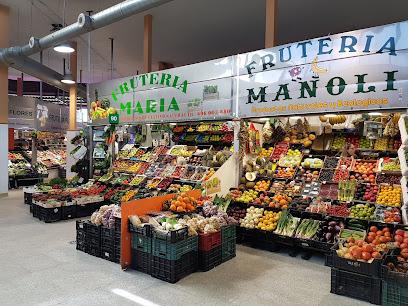
Parque El Esparragal
Discover the natural beauty and serene landscapes of Parque El Esparragal in Málaga, a perfect retreat for relaxation and family fun.

Watchtower of Cala de Mijas
Discover the historic Watchtower of Cala de Mijas, a stunning landmark offering breathtaking views and a glimpse into Spain's coastal heritage.
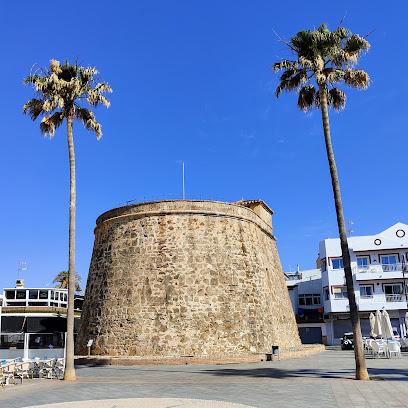
Essential places to dine
Venta Restaurante La Butibamba
Experience authentic Spanish flavors at Venta Restaurante La Butibamba – where tradition meets taste along the Mediterranean coast.
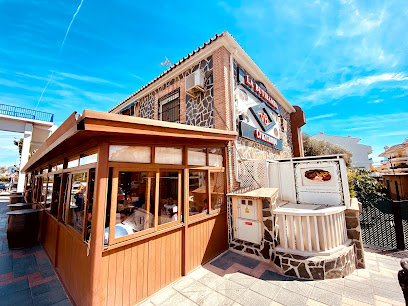
Restaurante El Higuerón
Experience exquisite cuisine with breathtaking views at Restaurante El Higuerón in Fuengirola's vibrant culinary scene.

La Dolce Vita Beach - Chiringuito en Marbella
Indulge in authentic Italian cuisine at La Dolce Vita Beach in Marbella while enjoying stunning ocean views.
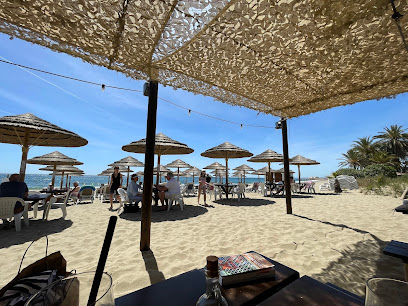
Restaurante La Bocana
Experience exquisite Mediterranean cuisine at Restaurante La Bocana in Marbella; a must-visit for seafood lovers.
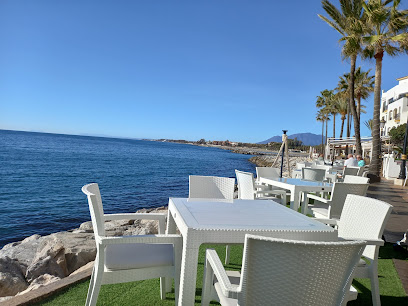
The Beach House Restaurant Marbella
Discover exquisite Mediterranean dining at The Beach House Restaurant in Marbella, where stunning views meet culinary excellence.
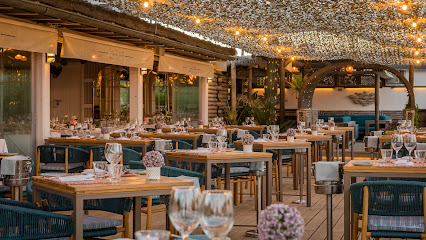
Soleo Marbella Beach Club Restaurant
Experience the essence of Mediterranean dining at Soleo Marbella Beach Club with exquisite dishes and breathtaking coastal views.
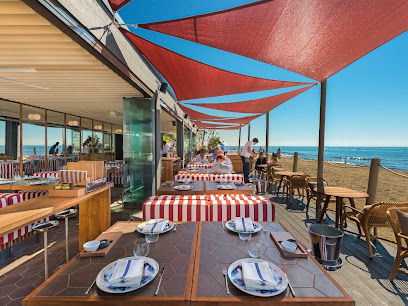
Cascada Cocina & Bar
Experience exquisite Mediterranean dining at Cascada Cocina & Bar in Marbella – where culinary tradition meets modern flair.
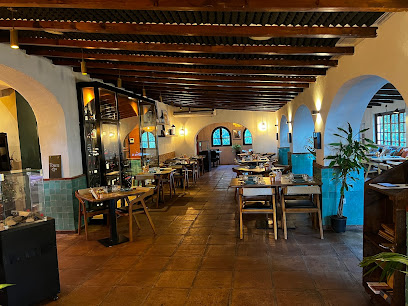
Mini India Elviria
Experience authentic Indian cuisine at Mini India Elviria in Marbella - where rich flavors meet Mediterranean charm.
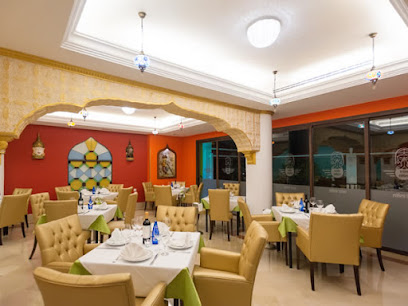
Playa Europa
Discover Playa Europa: A Mediterranean haven in Marbella offering exquisite seafood and barbecue delights with stunning coastal views.
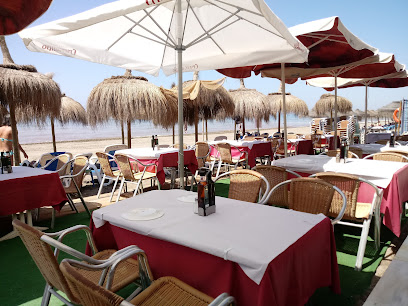
Restaurante La Reja. Steak House & Traditional Spanish Restaurant with Panoramic Views
Experience authentic Spanish cuisine at Restaurante La Reja, where every meal comes with breathtaking panoramic views in Mijas.

The Farm Restaurant
Discover The Farm Restaurant: A unique fusion of Mediterranean flavors and healthy options in Marbella's vibrant dining scene.
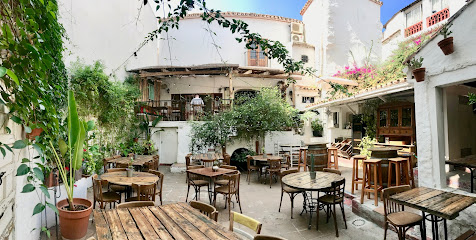
IBIZA restaurant Torremolinos
Experience authentic Mediterranean cuisine at Ibiza Restaurant Torremolinos - where grilled flavors meet vibrant coastal charm.
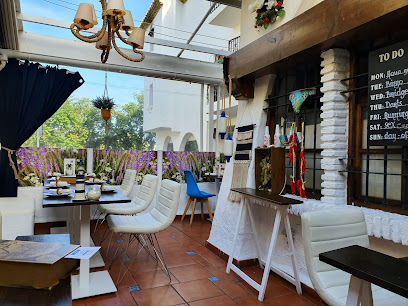
Peccati di Gola Mijas-Pueblo
Discover authentic Italian flavors at Peccati di Gola Mijas-Pueblo - where exquisite cuisine meets breathtaking views.

CASA DEL MAR Tapas Bar Restaurant
Savor authentic Mediterranean tapas and cocktails at CASA DEL MAR Tapas Bar Restaurant in beautiful Marbella.
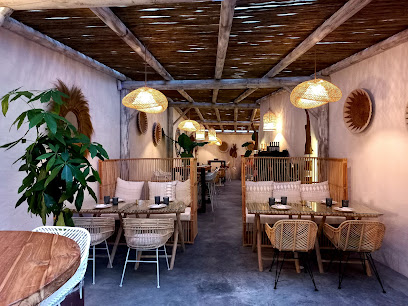
Ristorante Zia Lola
Experience authentic Italian cuisine at Ristorante Zia Lola in Las Lagunas de Mijas – where every dish tells a story.
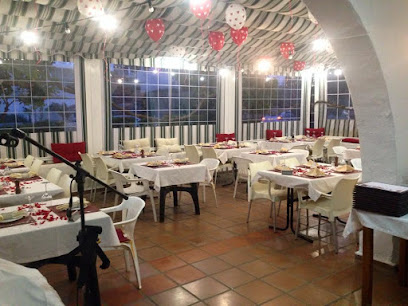
Markets, malls and hidden boutiques
Plaza Mayor
Discover Plaza Mayor in Málaga: A vibrant shopping oasis with diverse stores, delightful dining, and a lively atmosphere, perfect for all tourists.
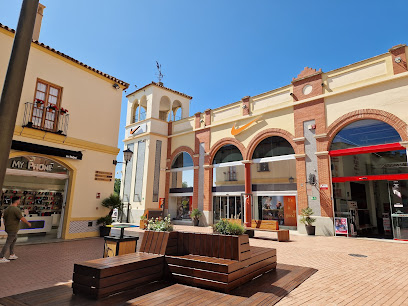
La Cañada Shopping Center
Discover the vibrant shopping experience at La Cañada Shopping Center in Marbella, blending luxury brands, diverse dining, and entertainment.
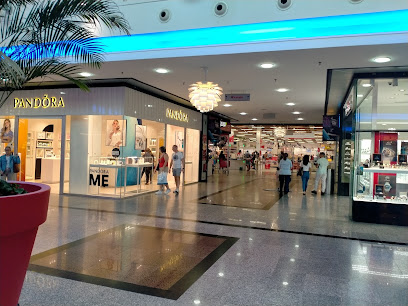
Shopping Centre El Ingenio
Explore Shopping Centre El Ingenio in Vélez-Málaga for an unforgettable shopping experience filled with diverse stores, dining, and entertainment options.
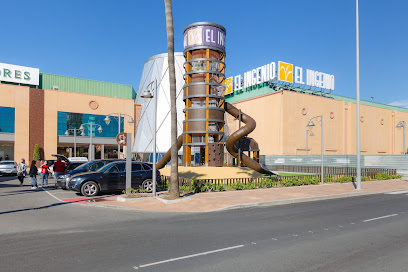
Rosaleda Shopping Mall
Discover shopping, dining, and entertainment all in one place at Rosaleda Shopping Mall, Málaga's vibrant retail destination.
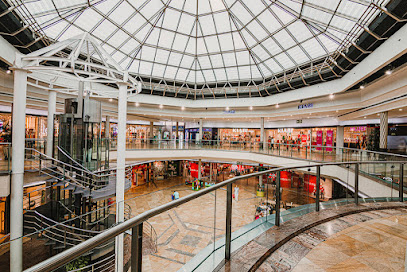
Puerto Marina Shopping
Discover the vibrant shopping experience at Puerto Marina Shopping, where retail, dining, and stunning marina views await.
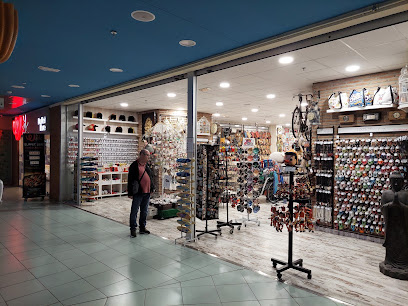
Designer Outlet Malaga
Explore the best of fashion and home goods at Designer Outlet Malaga, where style meets savings in a stunning shopping atmosphere.

Banús Marina Mall
Discover unparalleled shopping and luxury dining at Banús Marina Mall in Marbella, a must-visit destination for every traveler.
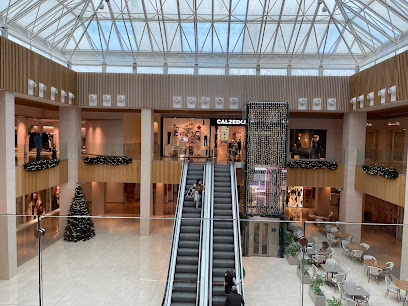
FUENGIROLA-222 ALE-HOP
Explore FUENGIROLA-222 ALE-HOP for unique gifts and souvenirs that capture the essence of Fuengirola's vibrant culture.
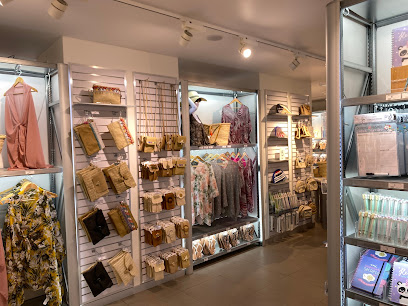
Centro comercial RIVIERA Plaza
Explore the Centro Comercial RIVIERA Plaza in Málaga: a shopping haven with diverse stores and delightful dining options for all tourists.
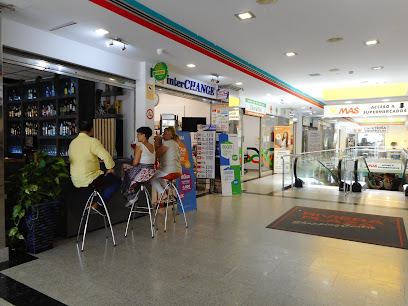
ALE-HOP
Explore ALE-HOP in Mijas for unique gifts, local crafts, and unforgettable souvenirs that capture the essence of your travels.
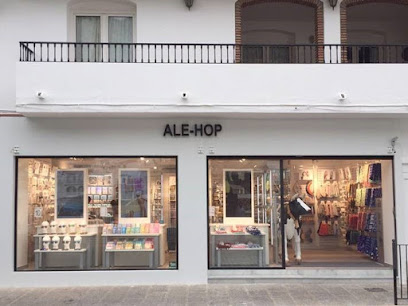
Spanish Ceramic Paradise
Experience the vibrant artistry of Spanish ceramics at the Spanish Ceramic Paradise in Mijas, a treasure trove of unique pottery and cultural heritage.
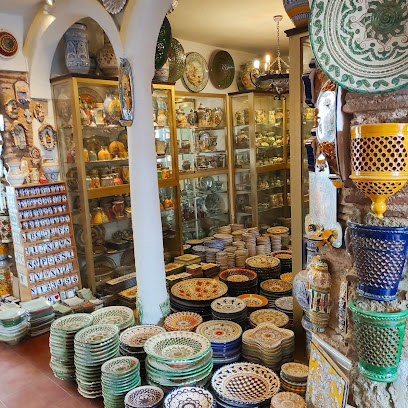
Vintage Deja Vu
Discover Vintage Deja Vu in Marbella, where unique vintage clothing and antique treasures await every discerning traveler.
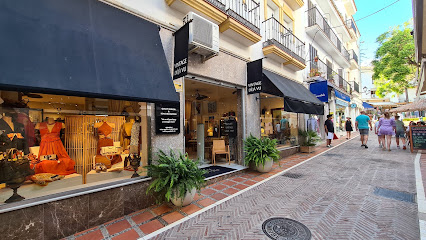
ELH LUXURY LEATHER - Venta Productos De Piel Natural - 100% Cuero - Al Por Mayor Y Al Por Menor
Explore ELH Luxury Leather in Mijas for exquisite 100% natural leather goods, from stylish bags to elegant fur coats, perfect for every fashion enthusiast.
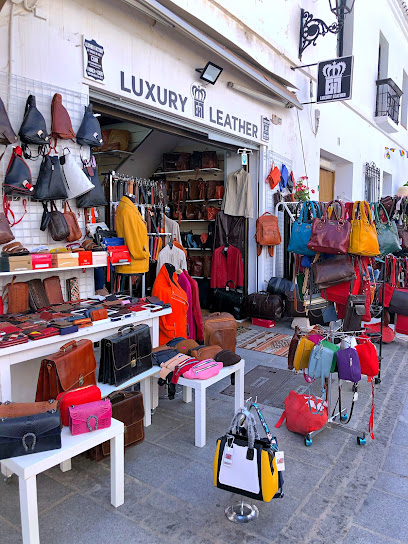
amapola
Explore Amapola in Mijas for unique gifts and souvenirs that embody the local culture and charm of this beautiful Spanish town.
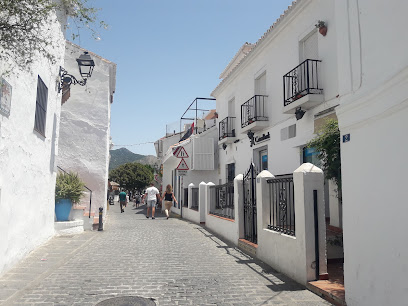
Fatzzu Design
Explore the exquisite jewelry and fashion at Fatzzu Design, a unique shopping destination in the heart of Mijas, Spain.
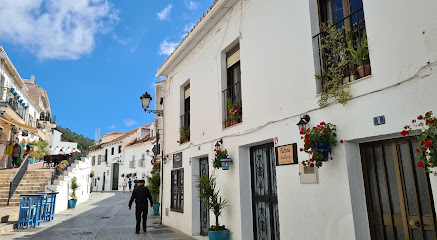
Essential bars & hidden hideouts
Malibu Beach Bar
Discover Malibu Beach Bar in Benalmádena: A coastal paradise for delicious food and refreshing cocktails with stunning sea views.
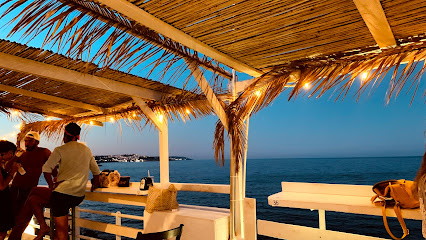
Frank’s Corner
Discover the lively spirit of Marbella at Frank's Corner, where great drinks and friendly faces create a memorable nightlife experience.
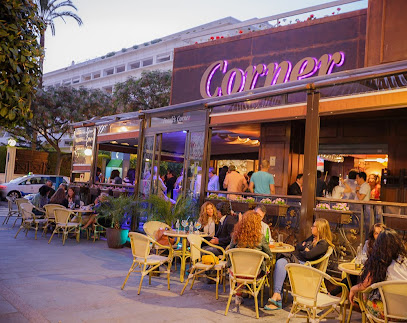
Speakeasy Jazz Club & Cocktails
Experience the magic of live jazz and exquisite cocktails at Fuengirola's hidden gem, Speakeasy Jazz Club & Cocktails.
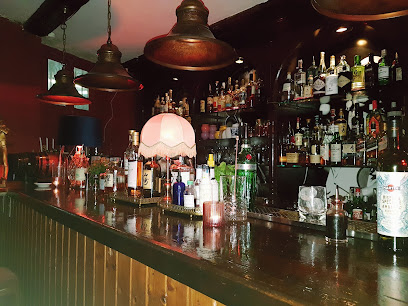
Calle cornejo bar betis Recogida
Discover the vibrant flavors and welcoming atmosphere of Calle Cornejo Bar Betis in Las Lagunas de Mijas, where local culture meets delightful cuisine.
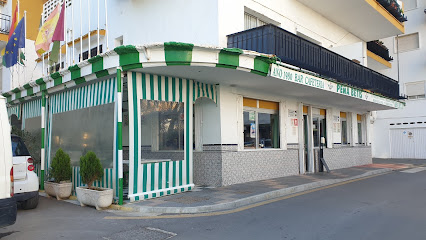
Bonanza Bar
Discover the lively atmosphere of Bonanza Bar in Benalmádena – a top spot for live music, affordable drinks, and unforgettable nights out.
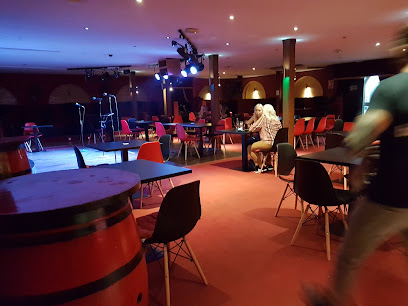
Bar La Martina
Discover the vibrant atmosphere and delicious tapas at Bar La Martina in Mijas, a perfect blend of local cuisine and friendly service.
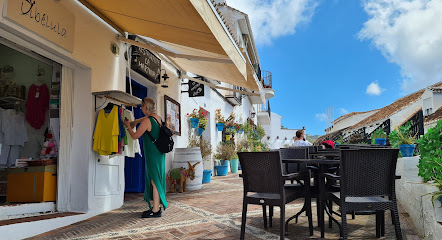
Forever Beach Club
Discover the lively Forever Beach Club in Benalmádena - where cocktails, dancing, and beach vibes create unforgettable nights.
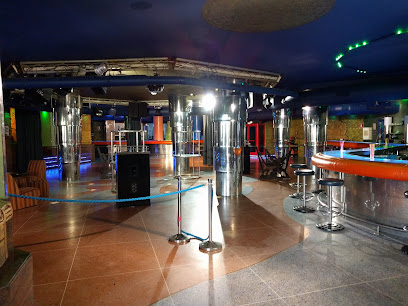
Styles Music Bar
Experience the vibrant nightlife of Torremolinos at Styles Music Bar, where great music and affordable drinks create unforgettable nights.
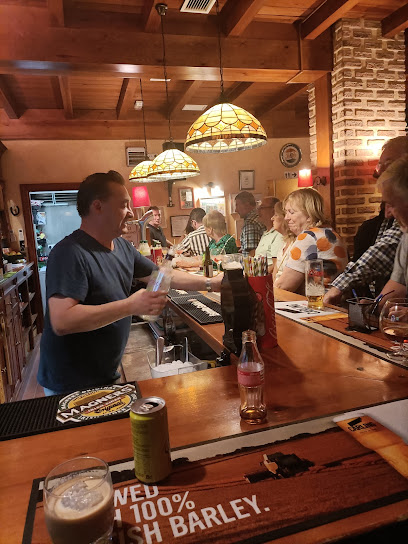
Elton's Rocket Bar
Discover the lively atmosphere at Elton's Rocket Bar, a premier live music venue in Torremolinos offering karaoke and piano performances for an unforgettable night out.
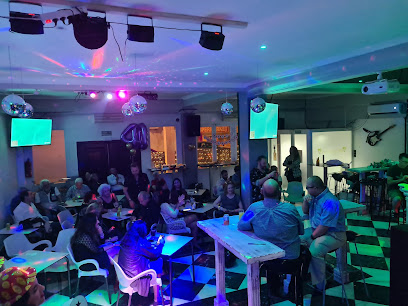
Harmons Bar Elviria
Enjoy a dynamic sports bar experience in Elviria, Málaga, with delicious food, refreshing drinks, and a lively atmosphere perfect for relaxation and entertainment.
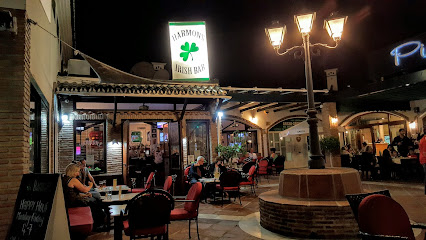
Churchill's fun pub
Discover Churchill's Fun Pub in Fuengirola, a lively bar offering great drinks, entertainment, and a vibrant atmosphere perfect for tourists.

Bar Olé
Discover Bar Olé in Benalmádena for a delightful blend of drinks, atmosphere, and social buzz, perfect for tourists seeking a taste of local nightlife.
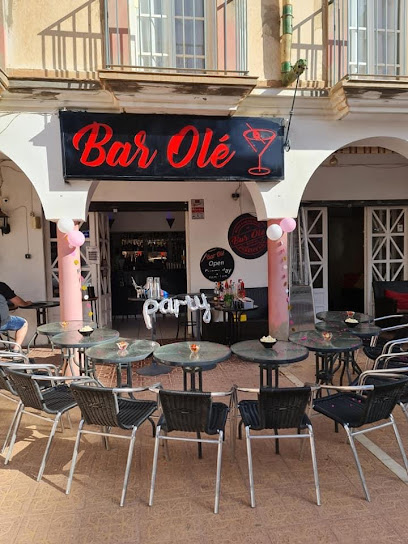
The Dog With Two Heads Pub
Discover the lively atmosphere of The Dog With Two Heads Pub in Fuengirola, a perfect blend of local charm, delicious food, and vibrant nightlife.
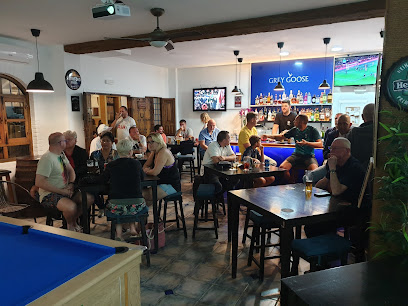
Baobab Drinks & Cocktails
Discover the vibrant atmosphere of Baobab Drinks & Cocktails, where tropical flavors meet the lively nightlife of Fuengirola.
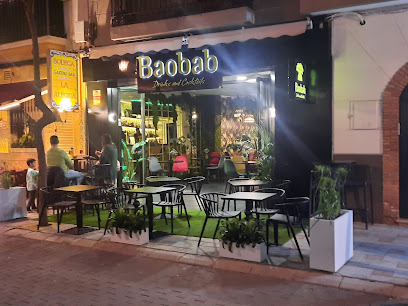
Bar Marie La Cala Hills
Discover the charm of Bar Marie La Cala Hills, a perfect blend of local culture, stunning views, and delightful drinks in Mijas.
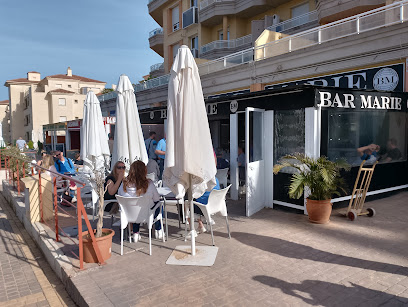
Local Phrases about Costa del Sol
-
- HelloHola
[oh-la] - GoodbyeAdiós
[ah-dee-ohs] - YesSí
[see] - NoNo
[noh] - Please/You're welcomePor favor/De nada
[por fah-bor/deh nah-dah] - Thank youGracias
[grah-thee-ahs] - Excuse me/SorryPerdón/Lo siento
[pehr-dohn/loh see-ehn-toh] - How are you?¿Cómo estás?
[koh-moh ehs-tahs] - Fine. And you?Bien. ¿Y tú?
[byen. ee too] - Do you speak English?¿Hablas inglés?
[ah-blahs een-glehs] - I don't understandNo entiendo
[noh ehn-tee-ehn-doh]
- HelloHola
-
- I'd like to see the menu, pleaseMe gustaría ver el menú, por favor
[meh goos-tah-ree-ah behr ehl meh-noo, por fah-bor] - I don't eat meatNo como carne
[noh koh-moh kahr-neh] - Cheers!¡Salud!
[sah-lood] - I would like to pay, pleaseMe gustaría pagar, por favor
[meh goos-tah-ree-ah pah-gahr, por fah-bor]
- I'd like to see the menu, pleaseMe gustaría ver el menú, por favor
-
- Help!¡Ayuda!
[ah-yoo-dah] - Go away!¡Vete!
[veh-teh] - Call the Police!¡Llama a la Policía!
[yah-mah ah lah poh-lee-thee-ah] - Call a doctor!¡Llama a un médico!
[yah-mah ah oon meh-dee-koh] - I'm lostEstoy perdido/a
[ehs-toy pehr-dee-doh/ah] - I'm illEstoy enfermo/a
[ehs-toy ehn-fehr-moh/ah]
- Help!¡Ayuda!
-
- I'd like to buy...Me gustaría comprar...
[meh goos-tah-ree-ah kohm-prahr...] - I'm just lookingSolo estoy mirando
[soh-loh ehs-toy mee-rahn-doh] - How much is it?¿Cuánto cuesta?
[kwan-toh kwes-tah] - That's too expensiveEsto es demasiado caro
[ehs-toh ehs deh-mah-syah-doh kahr-oh] - Can you lower the price?¿Puedes bajar el precio?
[pweh-dehs bah-hahr ehl pree-syoh]
- I'd like to buy...Me gustaría comprar...
-
- What time is it?¿Qué hora es?
[keh oh-rah ehs] - It's one o'clockEs la una
[ehs lah oo-nah] - Half past (10)Y media (10)
[ee meh-dee-ah (deh-eez)] - MorningMañana
[mah-nyah-nah] - AfternoonTarde
[tahr-deh] - EveningNoche
[noh-cheh] - YesterdayAyer
[ah-yehr] - TodayHoy
[oy] - TomorrowMañana
[mah-nyah-nah] - 1Uno
[oo-noh] - 2Dos
[dohs] - 3Tres
[trehs] - 4Cuatro
[kwah-troh] - 5Cinco
[theen-koh] - 6Seis
[sehs] - 7Siete
[syeh-teh] - 8Ocho
[oh-choh] - 9Nueve
[nweh-veh] - 10Diez
[dyehth]
- What time is it?¿Qué hora es?
-
- Where's a/the...?¿Dónde está...?
[dohn-deh ehs-tah] - What's the address?¿Cuál es la dirección?
[kwal ehs lah dee-rehk-syohn] - Can you show me (on the map)?¿Puedes enseñarme (en el mapa)?
[pweh-dehs ehn-seh-nyar-meh (ehn ehl mah-pah)] - When's the next (bus)?¿Cuándo es el próximo (autobús)?
[kwan-doh ehs ehl proh-ksee-moh (ow-toh-boos)] - A ticket (to ....)Un billete (a ....)
[oon bee-ye-teh (ah ....)]
- Where's a/the...?¿Dónde está...?
History of Costa del Sol
-
The origins of Costa del Sol trace back to ancient times when the Phoenicians established colonies in the 7th century BC. These early settlers laid the foundations for trade and maritime activities. Later, the Romans took control and significantly developed the region. They built infrastructure such as roads, aqueducts, and the town of Malaca, now known as Málaga, which became a crucial port city in the Roman Empire.
-
In the 8th century AD, the Moors invaded and brought significant changes to Costa del Sol. This era saw the construction of iconic architectural marvels like the Alcazaba of Málaga and the Castillo de Gibralfaro. The Moors introduced advanced agricultural techniques and a rich cultural heritage that is still evident today. The Reconquista, the Christian conquest of Moorish territories, culminated in 1487 when Málaga was captured by the Catholic Monarchs, Ferdinand and Isabella.
-
The 16th and 17th centuries were marked by frequent pirate attacks along the Costa del Sol's coastline. Barbary pirates from North Africa often raided coastal villages, leading to the construction of defensive watchtowers and fortifications that can still be seen today. These turbulent times contributed to the region's rich tapestry of legends and folklore.
-
During the 19th and early 20th centuries, Costa del Sol experienced a significant boom in its fishing industry. Traditional fishing methods and techniques were passed down through generations, shaping the coastal culture and economy. The quaint fishing villages, such as Estepona and Fuengirola, retain their charm with whitewashed houses and bustling fish markets.
-
The mid-20th century marked the beginning of Costa del Sol's transformation into a world-renowned tourist destination. Visionaries like Prince Alfonso von Hohenlohe played a pivotal role in developing Marbella into a luxury resort town. The region's pleasant climate, stunning beaches, and vibrant nightlife attracted visitors from around the globe, earning it the nickname 'Sun Coast'.
-
Costa del Sol is rich in cultural traditions that are celebrated with fervor throughout the year. Festivals such as the Feria de Málaga, Semana Santa (Holy Week), and the Fiesta de San Juan showcase the region's deep-rooted customs, music, and dance. These events offer an immersive experience into the local way of life and highlight the area's historical heritage.
Costa del Sol Essentials
-
Costa del Sol is located in the southern region of Spain, in the province of Málaga. The main gateway to the Costa del Sol is Málaga-Costa del Sol Airport (AGP), which is well-connected to major cities across Europe and beyond. From the airport, you can take a taxi, rent a car, or use public transportation to reach various destinations along the coast. There are also high-speed trains (AVE) connecting Málaga with cities like Madrid and Barcelona.
-
Public transportation in Costa del Sol is efficient and affordable. The local train service, Cercanías, connects Málaga with nearby towns such as Fuengirola and Torremolinos. Buses operated by the EMT and other companies cover most areas and are a cost-effective way to travel. Taxis are widely available, and ride-hailing services like Uber operate in the region. For more flexibility, consider renting a car to explore the area at your own pace.
-
The official currency in Spain is the Euro (EUR). Credit and debit cards are widely accepted in most hotels, restaurants, and shops. ATMs are plentiful, especially in tourist areas. It's advisable to carry some cash for small purchases and for use in more rural areas where card payments may not be accepted. Currency exchange services are available at the airport, banks, and dedicated exchange offices.
-
Costa del Sol is generally a safe destination for tourists. However, as in any tourist hotspot, petty crimes like pickpocketing can occur, especially in crowded areas and on public transportation. Be cautious in neighborhoods such as El Palo and La Trinidad in Málaga, where crime rates are slightly higher. Avoid walking alone late at night in unfamiliar areas and always keep an eye on your belongings.
-
In case of emergency, dial 112 for immediate assistance. This number connects you to police, fire services, and medical emergencies. Hospitals and medical centers are well-equipped, with Costa del Sol Hospital in Marbella being one of the main facilities. Pharmacies are abundant, and many offer 24-hour service. It is recommended to have travel insurance that covers medical emergencies.
-
Fashion: Do dress comfortably and stylishly, but avoid beachwear when not at the beach. Don't wear revealing clothing when visiting religious sites. Religion: Do respect religious customs and dress modestly in churches. Don't make loud noises or take photos without permission. Public Transport: Do validate your ticket before boarding trains and buses. Don't eat or drink on public transport. Greetings: Do greet people with a 'hola' or 'buenos días' and a handshake. Don't address people by their first name unless invited to do so. Eating & Drinking: Do try local dishes such as tapas and paella. Don't tip excessively; rounding up the bill or leaving small change is customary.
-
To experience Costa del Sol like a local, visit the traditional markets such as Mercado Central de Atarazanas in Málaga for fresh produce and local delicacies. Join in on local festivals like Feria de Málaga for an authentic cultural experience. Explore lesser-known beaches such as Playa de Maro for a more tranquil atmosphere. Engage with locals in small tapas bars for genuine interactions and insights into the local way of life.
Trending Landmarks in Costa del Sol
-
Plaza de España
-
Alcazaba
-
Fundación Cueva de Nerja
-
Caminito del Rey . North Access
-
Santa Iglesia Catedral Basílica de la Encarnación
-
Bioparc Fuengirola
-
Castillo de Gibralfaro
-
Colomares Castle
-
Málaga Park
-
Parque del Oeste
-
Selwo Aventura
-
Teatro Romano de Málaga
-
CAC Málaga
-
Mirador de Gibralfaro
-
Centro Histórico de Estepona
Nearby Cities to Costa del Sol
-
Things To Do in Ronda
-
Things To Do in Catalan Bay
-
Things To Do in Moorish Castle
-
Things To Do in Casemates Square
-
Things To Do in Gibraltar
-
Things To Do in Main Street
-
Things To Do in Alameda Botanic Gardens
-
Things To Do in St. Michael's Cave
-
Things To Do in Queensway Quay Marina
-
Things To Do in Gorham's Cave Complex
-
Things To Do in Europa Point
-
Things To Do in Tetouan
-
Things To Do in Tangier
-
Things To Do in Cádiz
-
Things To Do in Seville







